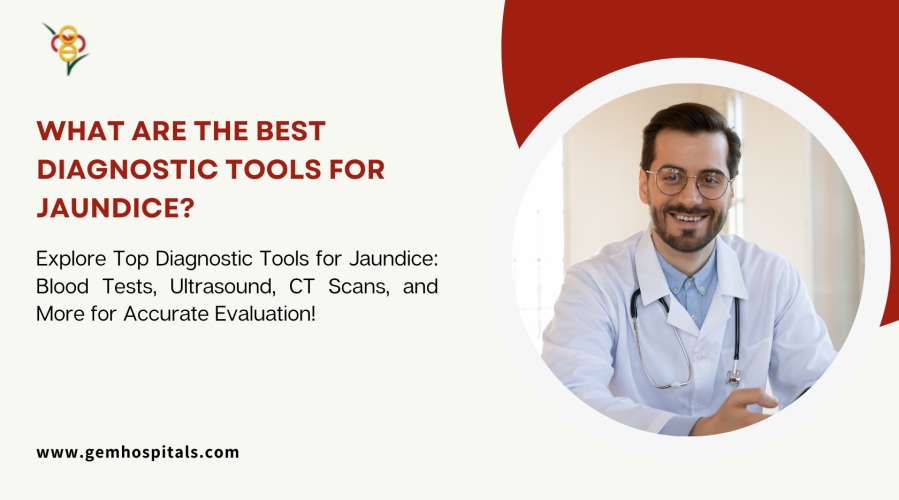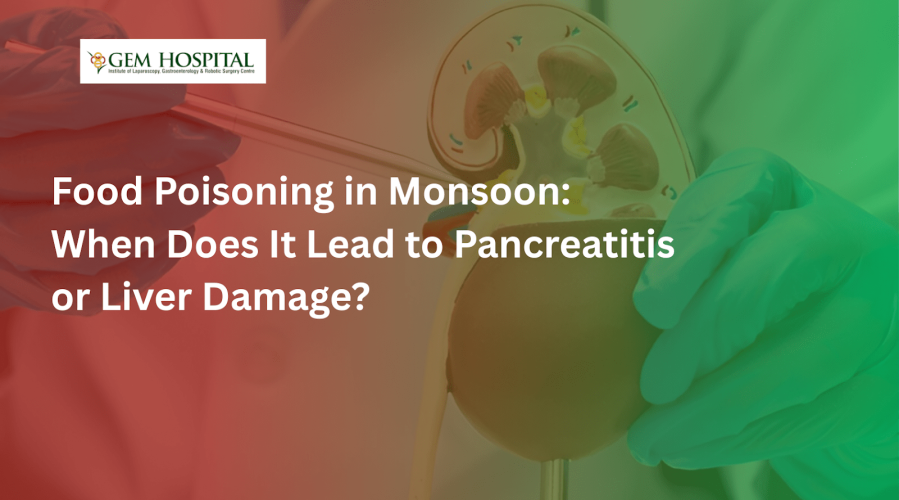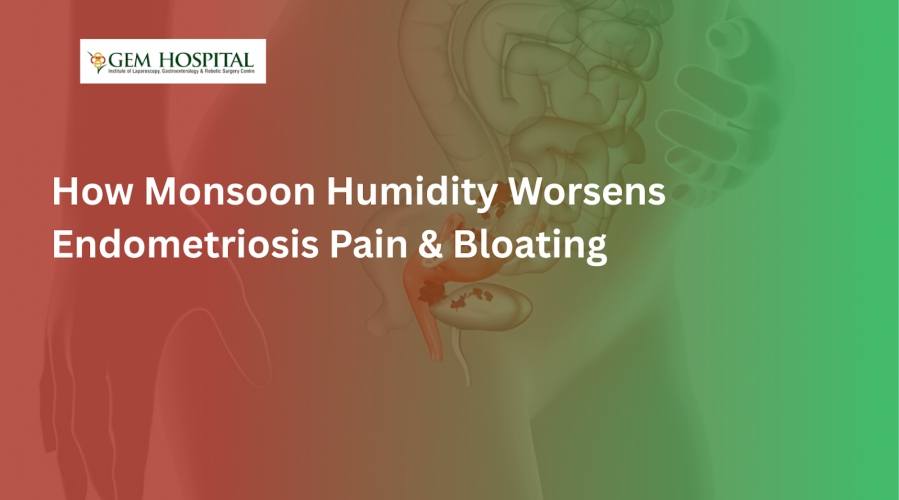Food poisoning is common during the monsoon. Learn when it becomes serious, how it can lead to pancreatitis or liver damage, warning signs, and when to seek medical care.
What Are the Best Diagnostic Tools for Jaundice?

One of the signs of liver disorders is jaundice, which manifests itself in the yellowing of the skin and the whites of the eyes. But to identify the cause of jaundice, one has to examine the patient thoroughly with machines. Correct diagnosis can define the nature of the disease and the directions of the therapy which is important for hepatitis or bile duct obstruction. Below are the most useful diagnostic tools for diagnosing jaundice and how Gem Hospital can help you with your diagnostic needs.
Best Diagnostic Tools for Jaundice
1. Blood Tests: The First Step in Jaundice Diagnosis
Serum biochemistry is usually the initial investigation of choice in jaundice because it gives important information about the liver. A liver function test (LFT) is a must as it shows bilirubin level and if it is high, it’s a sign of jaundice. Blood tests can also assess the liver enzymes – ALT, AST, and ALP to determine if the liver is swollen or not.
Another useful test is complete blood count (CBC) that will reveal anemia or infections that may lead to jaundice. Also, a coagulation panel evaluates the blood clotting ability and may be affected by liver function. Blood tests are fast and require minimal invasions; they are therefore suitable for use as the first diagnostic tool.
2. Imaging Tests: Gaining a Clear Picture
Blood tests show how much the liver has been affected, while imaging tests show the liver and other organs in detail. Some of the imaging tests are: ultrasound, computer tomography, magnetic resonance imaging. These tests help the doctor to see the condition of the liver, bile ducts and gallbladder and to establish any blockage or structural irregularity that may lead to jaundice.
- Ultrasound: Common because of its availability, ultrasound is used to diagnose blockage in the bile ducts, gallstones or liver tumors. It is not invasive, which makes it a first-line imaging modality.
- CT Scan and MRI: If further definition is required, a CT or MRI scan will allow for the identification of tumors or other serious liver pathology, as well as providing cross-sectional images of internal organs. In such cases, these advanced tools are more accurate than ultrasound.
3. Liver Biopsy: Providing Detailed Insights
In some instances, where the imaging and blood tests do not give clear results, a liver biopsy may be taken. This entails taking a biopsy of the liver, which entails cutting a small piece of the liver to be analyzed under the microscope in order to diagnose specific liver diseases such as cirrhosis, hepatitis or other inflammatory diseases that cause jaundice. While a biopsy is even more invasive, it may be necessary in complicated or chronic cases.
4. Endoscopic Retrograde Cholangiopancreatography (ERCP): Specialized Examination of Bile Ducts
ERCP is an endoscopic technique that uses endoscope and x-ray to visualize bile ducts as well as the pancreatic ducts. A fibre optic telescope is passed through the mouth into the stomach and small intestine to diagnose and treat strictures or blocked ducts. ERCP is most useful in the management of obstructive jaundice and tumours that may affect the bile ducts.
Trust Gem Hospital for Comprehensive Jaundice Diagnosis
The accurate diagnosis of jaundice therefore calls for a combination of the following investigations; blood tests, imaging and ERCP and/or liver biopsy if necessary. At Gem Hospital, we are well equipped with diagnostic instruments to diagnose the cause of jaundice correctly and therefore offer the right treatment to our patients. These tools are very crucial in diagnosing the liver and biliary diseases since early diagnosis is very crucial in managing the diseases hence enabling early treatment.
If you or a loved one has symptoms of jaundice, including yellowing of the skin or dark colored urine, the staff at Gem Hospital is prepared to help. Contact us today and make an appointment in order to receive a clear diagnosis and correct treatment.
Blogs & Article
UTI cases often rise during the rainy season. Learn why urology patients need extra precautions, common causes, symptoms, and prevention tips to stay healthy during monsoon.
Monsoon humidity can worsen endometriosis pain and bloating. Learn how weather changes affect symptoms and discover practical tips to manage discomfort during the rainy season.


